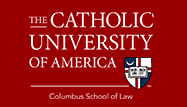Abstract
Where do children come from? The source of childhood—either nature or political will—is a matter not merely of chronology but of authority. Whoever makes children gets to define childhood. Legal childhood is one type of legal personhood. Legal personhood matters because legal persons bear legal rights and duties. Rights and duties direct how we act toward each other. Thus, our ideas about how persons come to be, who counts as a person, and how persons are defined in law determine in large part how we act toward persons, both other persons and ourselves.
A legal person is an artifact of law with a particular function. Its function is to identify a human being, group of human beings, or class of human beings to whom a right is owed or who bears responsibility for rendering the right to some other person. So, though childhood and personhood are artifacts of law, they are not arbitrary. Even artificial persons, such as trusts and corporations, must reflect pre-existing realities about the natural persons for whose benefit we make them. Laws presuppose the natural existence and natural personhood of human beings because artificial laws are made by human beings for human purposes.
Natural persons make artificial laws; laws do not make natural persons. All laws, including those laws that identify children and secure their rights, serve the function of laws by attending to who human beings actually are and by securing their well-being. The legal status of childhood is and must remain rationally determined in large part by truths about vulnerable human beings.
Recommended Citation
Adam J. MacLeod,
Children and Chairs, Artifacts and Reality,
74
Cath. U. L. Rev.
696
(2025).
Available at:
https://scholarship.law.edu/lawreview/vol74/iss4/8
Included in
Jurisprudence Commons, Law and Philosophy Commons, Medical Jurisprudence Commons, Natural Law Commons, Public Law and Legal Theory Commons


